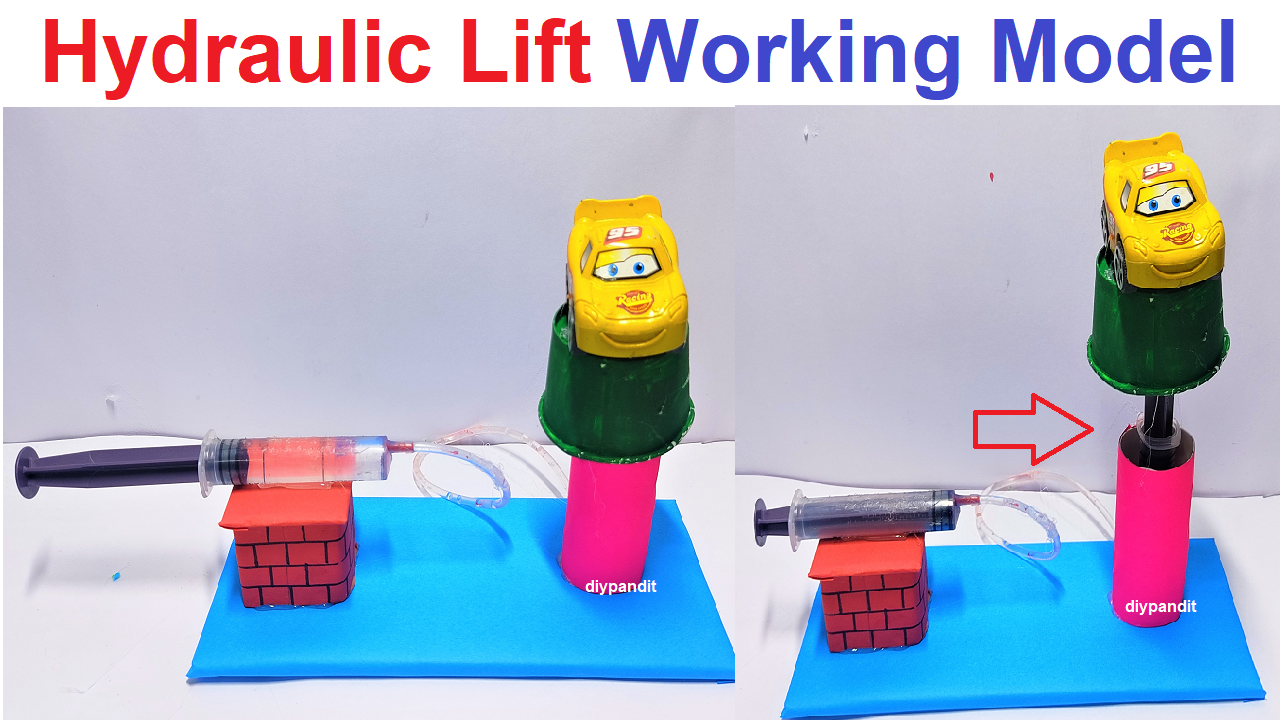Introduction:
A hydraulic system uses fluids to transmit force and motion. In this project, we will build a simple hydraulic car lift using syringes. By pushing down on one syringe, we’ll demonstrate how fluid pressure is transmitted to the other syringe, resulting in the lifting of a platform, similar to how a real hydraulic lift works.

Materials:
- Two large medical syringes (without needles)
- Clear plastic tubing
- Cardboard or foam board
- Wooden dowels or sticks
- Hot glue gun or adhesive
- Small toy car or object to lift
- Water
- Food coloring (optional)
Science Principles: The hydraulic lift operates based on Pascal’s principle, which states that when pressure is applied to a confined fluid, that pressure is transmitted equally in all directions throughout the fluid. In this project, the pressure applied to the fluid in one syringe will cause an increase in pressure throughout the fluid system, ultimately resulting in the lifting of the platform.
Step-by-Step Explanation:
- Constructing the Base: Begin by creating a sturdy base using cardboard or foam board. This base will serve as the foundation for the hydraulic lift system.
- Attaching the Syringes:
- Attach one end of a plastic tubing to the nozzle of each syringe using adhesive or a zip tie.
- Place the syringes side by side on the base, with the nozzles facing upwards.
- Creating the Lifting Platform:
- Attach vertical wooden dowels or sticks to the plungers of the syringes using adhesive. These will guide the lifting platform’s movement.
- Assembling the Hydraulic System:
- Attach the other ends of the plastic tubing to the nozzles of the syringes on the opposite side.
- Fill one syringe with water. Ensure there’s no air trapped in the tubing.
- Demonstrating Lifting:
- Gently push down on the plunger of the syringe containing water. This action forces water into the other syringe through the tubing.
- As water is pushed into the second syringe, it causes an increase in pressure in the entire fluid system. This increased pressure is transmitted to the wooden dowels, which in turn lifts the platform holding the toy car or object.
- Understanding the Science:
- Pascal’s principle explains that the pressure applied to a fluid is transmitted undiminished to all portions of the fluid and to the walls of its container.
- As you push down on the first syringe, you’re increasing the pressure on the fluid inside it. This increased pressure is transmitted through the tubing to the second syringe, pushing its plunger outward.
- The pressure in the second syringe is transferred to the wooden dowels, creating an upward force that lifts the platform and the object on it.
Conclusion: Through this project, you’ve created a simple hydraulic system using syringes. By understanding Pascal’s principle, you’ve demonstrated how pressure applied to a confined fluid can lead to a significant force multiplication, making hydraulic systems essential in various applications, from car lifts to heavy machinery.
hydraulic lift working model for school science exhibition – diy – simple and easy steps #hydrauliclift #workingmodel #scienceproject #scienceexhibition #sciencefair #hydraulicproject

